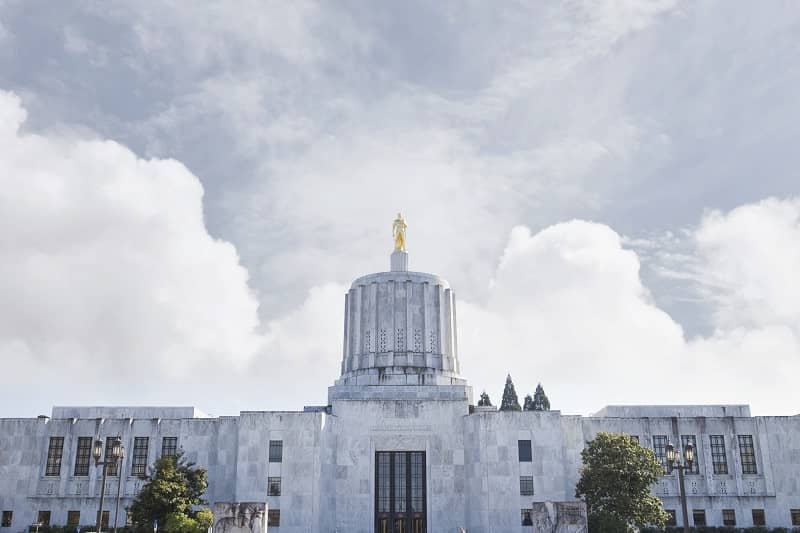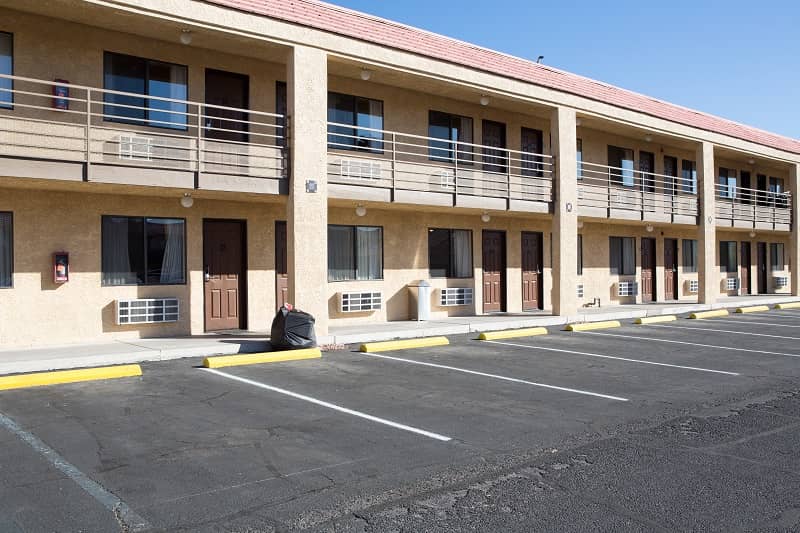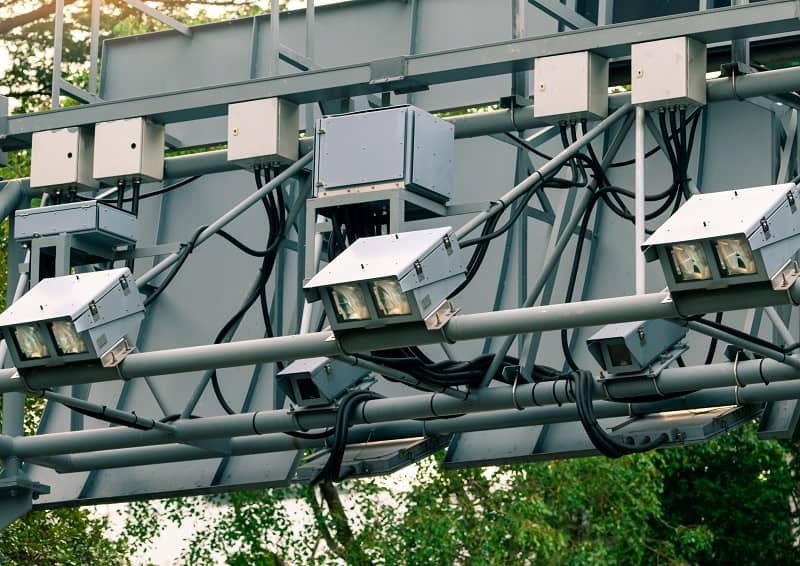Before the Senate Education Committee
By Steve Buckstein
Cascade Policy Institute
Chair Roblan and members of the Committee, my name is Steve Buckstein. I’m Senior Policy Analyst and Founder at Cascade Policy Institute, a public policy research organization based in Portland.
I want to share some thoughts about the value of Education Savings Accounts in general, and SB 437 in particular, which we’ve branded the Educational Opportunity Act: The Power of Choice.
Next, Professor Eric Fruits will briefly discuss the Fiscal Impacts of the bill.
Finally, you’ll hear from Oregon’s 2012 Mother of the Year, Bobbie Jager, about the importance of providing different educational options for different children.
School Choice programs allow students to choose schools or other educational resources and pay for them with a portion of the tax funding that otherwise would go to the public school assigned to them by their ZIP code.
While school choice is popular with large segments of the public, opponents worry that specific programs like vouchers or Education Savings Accounts may drain funds from the public school system.*
What these concerns overlook is that public funding for K-12 education should actually help educate students, not simply fund schools whether or not they meet specific student needs.
The latest and most versatile school choice programs being enacted across the country are Education Savings Accounts. Unlike vouchers, which only let parents pay for private school tuition, ESA funds may also be used for other approved educational expenses, such as online learning programs, private tutoring, community college costs, and other customized learning services and materials.
Also, while voucher funds all go to private school tuition or are lost to the families, funds remaining in ESA accounts each year may be “rolled over” for use in subsequent years, even into college. This creates incentives for families to “shop” for the best educational experiences at the lowest cost, as well as incentives for schools and educational programs to price their services as low as possible, not as high as possible as might be done under a voucher program.
Five states already have limited ESA programs. Nevada passed a near-universal ESA program in 2015, but its legislature has yet to fund it. In November 2015 your Committee heard from the author of that bill, 16-year public school teacher and state senator Scott Hammond. He told you that he viewed vouchers as the rotary telephones of the school choice world, and that ESAs are the smartphones of that world.
Vouchers just let parents choose a different school, but ESAs offer the equivalent of apps on your smartphone. You can use ESA funds for tuition at a private school, to pay for online courses, pay for tutors, pay for a Sylvan Learning type program, and/or pay for other approved educational options. A student is free to spend part-time at their local public school, and the rest of the time making other educational choices with the proportional share of their ESA funding.
In 2008, Cascade Policy Institute sponsored a School Choice Video Contest in which we asked parents and students to tell us what school choice meant to them. I want to show you one of my favorite entries. It’s from a 15-year-old homeschooled student in Southern Oregon.
If the Shoe Fits, Wear It! This legislature is about to allocate at least $8.2 billion taxpayer dollars to an education budget that may, in effect, fund shoes that aren’t a good fit for many of our children. ESAs would help some of those families find better-fitting shoes for their kids.
In addition to funding concerns, some critics of ESAs argue that they violate the principle of church/state separation. In Oregon, they might think that SB 437 violates Article 1, section 5 in our state constitution, which basically prevents the state from spending money for the benefit of any religious institution.
But it won’t! The public interest law firm Institute for Justice has studied the bill and concluded that it doesn’t violate either the Oregon or the U.S. Constitution. You have their complete legal analysis on OLIS.
Briefly, at the federal level, the 2002 Zelman Case before the Supreme Court found that as long as it’s the parents, not the state, deciding where a school choice program’s funds go, it doesn’t matter if the parents choose religious schools because it’s the parents, not the state, making those choices.
At least two state supreme courts, in Arizona and Nevada, have found the same thing with regard to ESAs and those state constitutional provisions, which are similar to Oregon’s so-called Blaine Amendment.
Now, let me give you a feel for how much more flexibility ESAs offer over the old voucher plans, and why they’ve sprung up so recently.
It wasn’t too long ago that if our parents or grandparents wanted to make a phone call they would pick up the receiver and ask a phone company operator to place their calls. Later, how glorious it was that we could use our rotary phones to spin out our own calls, even long-distance ones if we could afford the high per-minute costs. Then came digital phones, and finally cell phones became affordable to the masses. But even the early cell phones had limited uses.
You may not remember, but none of us had any cell phone apps before 2008, because there weren’t any. None. Imagine: All you could do on your cell phones before 2008 was make phone calls, maybe text, and maybe connect to the World Wide Web on a slow internet connection.
Just nine years later, over 2 billion people worldwide use apps on their smartphones. You may have dozens of apps on your phone today, and even if you only use a handful of them regularly, that’s a world away from what it was like before 2008. Lots of things are a world away from what they were like before 2008 — except for public education.
Consider the children in our schools today. Many of them have never known a world without smartphones and their apps. Rotary telephones, even landlines, are likely just historical oddities to them. Much of their world is new, except the way we adults try to educate them by sitting them down in rows, in a classroom with kids who are the same age, all in front of one teacher lecturing about some subject they may or may not find interesting and relevant to their lives.
Yet, many teachers see kids’ smartphones as a problem, right? They’re watching their screens instead of sitting politely in rows listening to the math lesson at 10, or the history lesson at 2.
We say that we want our kids to learn how to take advantage of technology, take STEM courses, and be prepared for the new careers awaiting them. So why do we see their use of that technology every day as a problem! They’re not paying attention to the teacher! They’re bored with school. The Shoes we make them wear aren’t good fits for many of them.
We know that they’ll likely find value in many of these subjects later in life, but if they can’t learn those lessons in ways that are relevant to them now, they may never learn them at all; or they may learn them too late to avoid painful life experiences between now and then.
In 2007, the House Subcommittee on Education Innovation, chaired by Representative Betty Komp, heard compelling testimony about some of those kids during a hearing on an earlier school choice bill, HB 2010. It was given by Black Portlander Jomo Greenidge, who describes himself as an educator and technologist.
Jomo can’t be here to talk with you today, but he hopes you’ll watch his earlier testimony and think about how Education Savings Accounts could help kids like these today.
[Jomo Greenidge video testimony]
Since Jomo gave that testimony in 2007, smartphone apps emerged, followed by Education Savings Accounts, which act much like smartphones of the school choice world. Many students in our schools today, and all the kids entering our schools tomorrow, will grow up in a world with modern communication and app technology.
It’s time we recognize that much of the money we tax and spend on their educations might not be meeting their educational needs. It’s time that we consider the Education Savings Account approach to let their families have some control over how that money is spent so it better meets their needs.
Other states have debated, and some are adopting, ESA programs this year. The pressure to pass more such bills will only grow.
We know that SB 437 won’t pass this year. While we’re thankful for this Informational Hearing, many Oregon families want more. Many Oregon families can’t wait for years to get their kids into better fitting Educational Shoes.
We can debate the details, but please take this issue seriously and help these families by passing an ESA bill soon, hopefully in the 2018 session.
Thank you.
* A 2009 scientific survey showed us that 87 percent of Oregon families with school-aged children want the ability to choose other than their local public school. And the results were similar for Republicans, Democrats, and Independents. So why do some 90 percent of them still send their kids to their local public school? You know why. It’s because they can’t afford to pay federal, state, and local taxes to fund that local school and pay for private school tuition at the same time. ESAs will give them the financial ability to make some other choices if they want to.
And, if 20 percent of Portland public school teachers send their kids to private schools, why would we think that 20 percent of their neighbors might not want to do the same, if they could afford it?
Based on data from the 2000 US Census, a report was published looking at where public school teachers sent their own kids to school in the nation’s 50 largest cities. It found that public school teachers send their own kids to private schools at much higher rates than their neighbors.
In Portland, 12.7 percent of parents sent their kids to private schools, but 20 percent of public school teachers who lived in Portland sent their kids to private schools. Doing some basic grade school math shows that teachers in the largest cities were 23 percent more likely to send their children to private schools, but in Portland they were 57 percent more likely to do so.
So, will SB 437 bill drain funds from public schools, or will it leave them harmless while allowing many students to make different choices? The answers depend on several assumptions which have now been evaluated by Eric Fruits, Ph.D. in a new review and evaluation of a universal ESA program for Oregon. The amount of the ESA deposits is the biggest driver of fiscal impacts.
As introduced, SB 437 would provide participating students with disabilities and in low-income households $8,781 per year (current state funding) in their ESAs. All other participating students would receive $7,903 (90% of current state funding). As Introduced, based on the assumptions below, the Fiscal Impact on the state and local school districts could be in the range of $200 million annually based on the following assumptions:
■ 90 percent of 61,000 students currently enrolled in non-public education would participate in the program.
■ Seven percent of 563,000 students currently enrolled in public schools would participate.
Based on these assumptions, the program has a fiscal “break even” for state and local school districts combined at an ESA annual amount of $6,000 for each participating student with disabilities and/or in a low-income household and $4,500 for all other students.
These are the dollar amounts proposed in the -1 Amendment to the bill. If fiscal impact were the only measure by which to evaluate this ESA program, the analysis shows that the program is “optimized” at an amount of $3,000 for each participating student with disabilities and/or in a low-income household and $2,250 for all other students. Once fully implemented, the program would save state and local governments $53 million a year.
Of course, fiscal impact is not and should not be the primary measure of this, or any well-designed school choice program. But, it is a political reality that such a program should not impose a fiscal burden on the state at a time that all budgets are under pressure.
The primary measure of this ESA program should be that it offers Oregon families as much choice as possible in how their children take advantage of educational opportunities funded by the state. The full report is here: Education Savings Accounts: Review and Evaluation of a Universal ESA in Oregon











